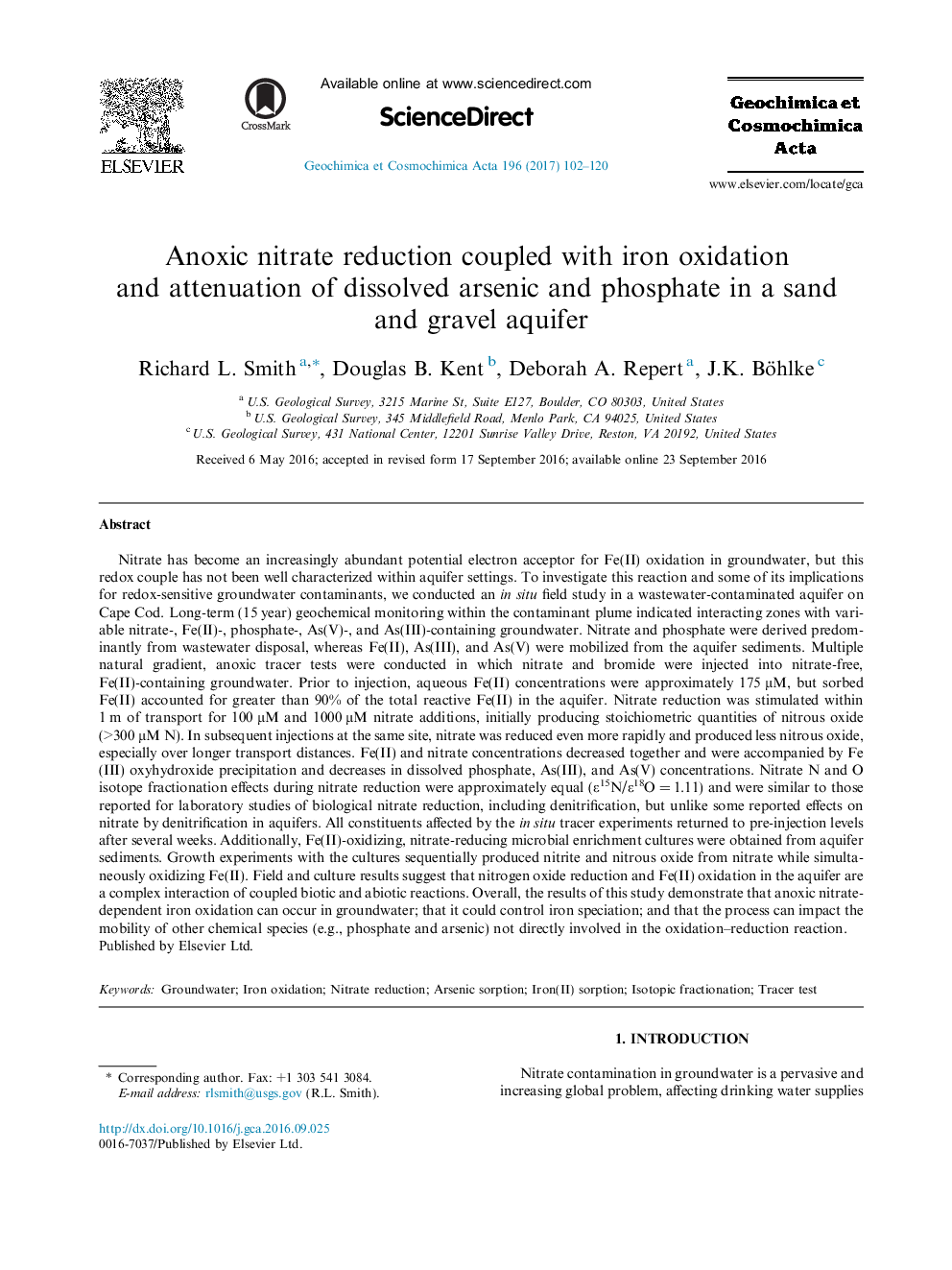| کد مقاله | کد نشریه | سال انتشار | مقاله انگلیسی | نسخه تمام متن |
|---|---|---|---|---|
| 6437101 | 1637961 | 2017 | 19 صفحه PDF | دانلود رایگان |
Nitrate has become an increasingly abundant potential electron acceptor for Fe(II) oxidation in groundwater, but this redox couple has not been well characterized within aquifer settings. To investigate this reaction and some of its implications for redox-sensitive groundwater contaminants, we conducted an in situ field study in a wastewater-contaminated aquifer on Cape Cod. Long-term (15 year) geochemical monitoring within the contaminant plume indicated interacting zones with variable nitrate-, Fe(II)-, phosphate-, As(V)-, and As(III)-containing groundwater. Nitrate and phosphate were derived predominantly from wastewater disposal, whereas Fe(II), As(III), and As(V) were mobilized from the aquifer sediments. Multiple natural gradient, anoxic tracer tests were conducted in which nitrate and bromide were injected into nitrate-free, Fe(II)-containing groundwater. Prior to injection, aqueous Fe(II) concentrations were approximately 175 μM, but sorbed Fe(II) accounted for greater than 90% of the total reactive Fe(II) in the aquifer. Nitrate reduction was stimulated within 1 m of transport for 100 μM and 1000 μM nitrate additions, initially producing stoichiometric quantities of nitrous oxide (>300 μM N). In subsequent injections at the same site, nitrate was reduced even more rapidly and produced less nitrous oxide, especially over longer transport distances. Fe(II) and nitrate concentrations decreased together and were accompanied by Fe(III) oxyhydroxide precipitation and decreases in dissolved phosphate, As(III), and As(V) concentrations. Nitrate N and O isotope fractionation effects during nitrate reduction were approximately equal (ε15N/ε18O = 1.11) and were similar to those reported for laboratory studies of biological nitrate reduction, including denitrification, but unlike some reported effects on nitrate by denitrification in aquifers. All constituents affected by the in situ tracer experiments returned to pre-injection levels after several weeks. Additionally, Fe(II)-oxidizing, nitrate-reducing microbial enrichment cultures were obtained from aquifer sediments. Growth experiments with the cultures sequentially produced nitrite and nitrous oxide from nitrate while simultaneously oxidizing Fe(II). Field and culture results suggest that nitrogen oxide reduction and Fe(II) oxidation in the aquifer are a complex interaction of coupled biotic and abiotic reactions. Overall, the results of this study demonstrate that anoxic nitrate-dependent iron oxidation can occur in groundwater; that it could control iron speciation; and that the process can impact the mobility of other chemical species (e.g., phosphate and arsenic) not directly involved in the oxidation-reduction reaction.
Journal: Geochimica et Cosmochimica Acta - Volume 196, 1 January 2017, Pages 102-120
